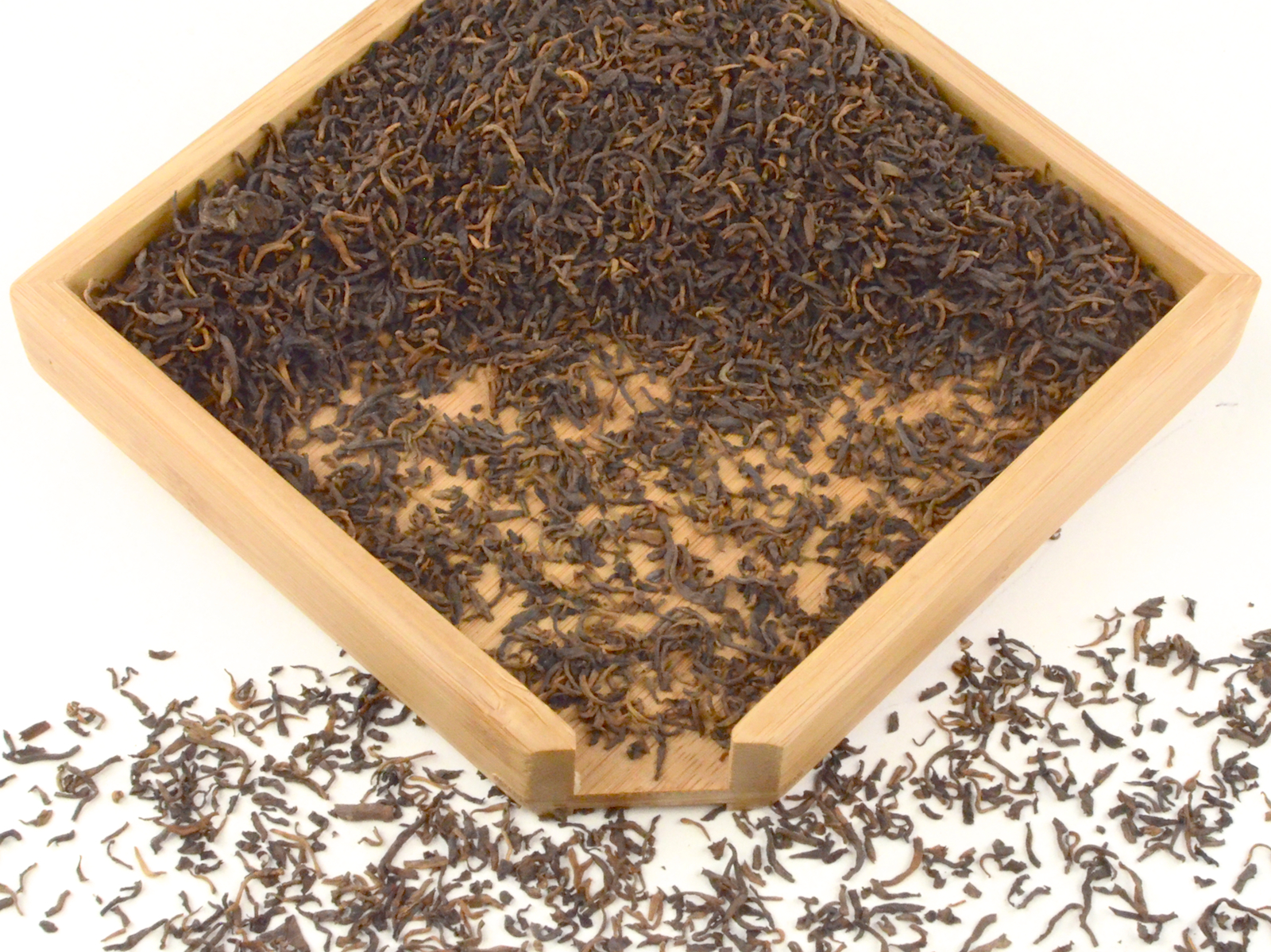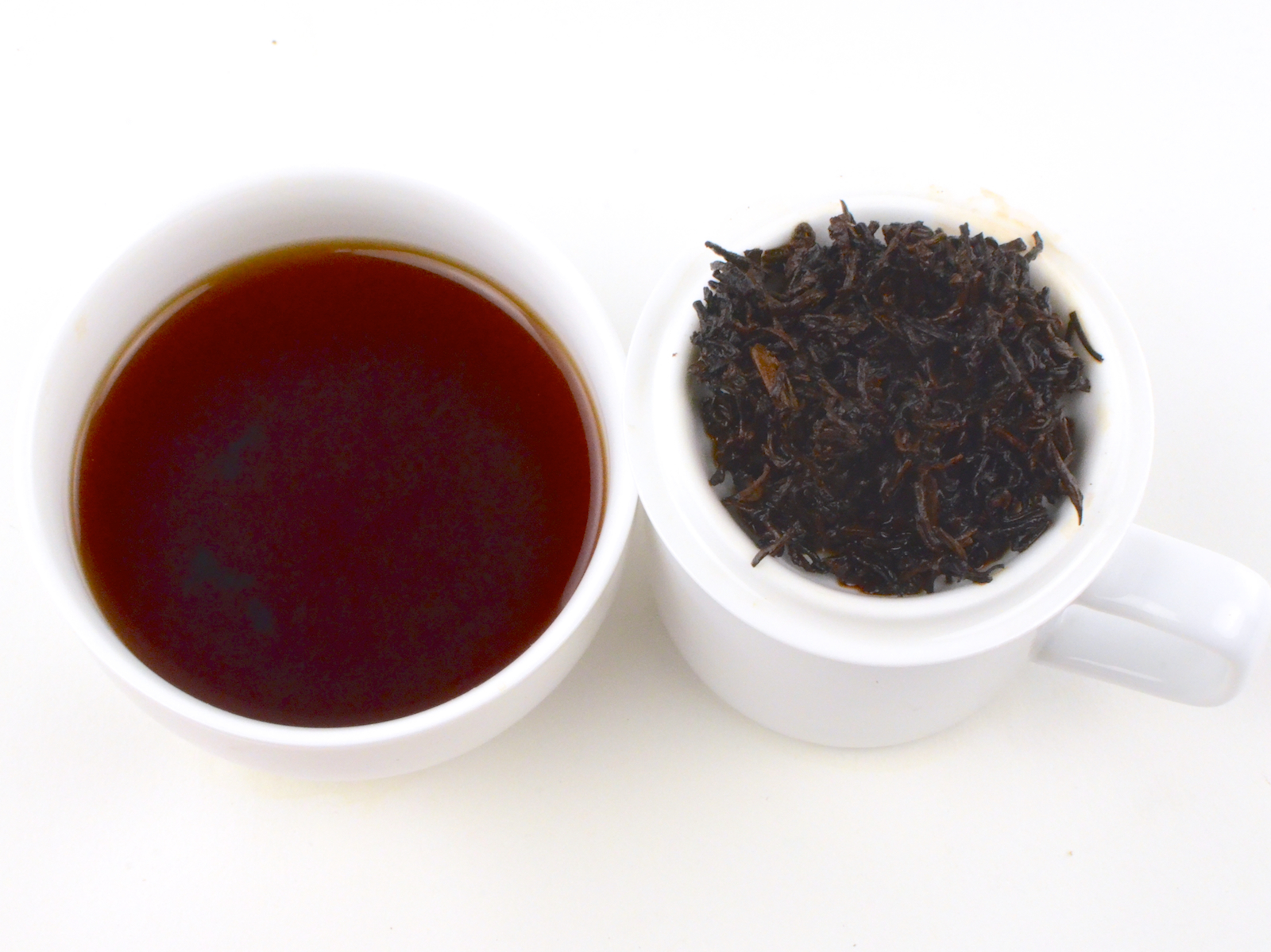Gongting (Palace Puer)
Loose Leaf Shu Puer 2012
Palace Puer is deep, sweet, and dark. Made from small young buds and tender leaves in the style of the tribute tea offered to China’s imperial court 150 years ago. A great, approachable tea for new puer drinkers.
- Tea Origin
- Jinggu County, Pu'er City, Yunnan Province, China
- Tea Bush
- Yunnan Dayezhong (Yunnan Large Leaf Tea Tree)
- Tea Maker
- Hu Haoming and Wang Xiqun
- Harvest Time
- April
- Plucking Standard
- One bud, one leaf
Gongting (Palace Puer) tea comes from Jinggu County and is made from tea bushes that are 60 to 100 years old. The growing area is over 2,000 meters above sea level. The tea leaf size is very even and young leaves and buds were plucked; the golden hues are from the buds. The tea color is bright with red overtones. The flavor is rich with a sweet aftertaste and clear of any off-flavors. Out of one ton of mao cha, only 30 to 60 kilos will be used for this tea after sorting.
The Making of Gongting
Unlike green or white teas, which use the youngest buds and leaves to make the most sought-after grades, the most popular grades of puer tea use the middle to large size leaves. Yunnan tea makers in the late Qing Dynasty used younger leaf and bud material to make large compressed “ren tou cha” — that is “human head” sized balls of tea. The oldest example of compressed puer tea that survives today is one of these ren tou cha that was gifted to the Qing emperor.
Tea makers wait for all the mao cha from different regions to be finished processing. All grades of leaves are piled about 80cm (~31.5in) high on one side of the factory. About 6-20 tons of tea will be used at a time. The leaves are covered with cotton fabric, and sometimes gently sprayed with moisture on the top.
The tea will create heat inside, naturally growing microbes. Puer factories themselves have rich microbial environments from years of making puer tea. The tea maker checks the piles everyday to test the temperature of the tea. Puer factories have their own specific methods of ripening and cooling down the tea, so as to not overcook the leaves.
Every few days, workers will use large wooden shovels to transfer the tea from one side of the factory to the other. The leaves stick together during the ripening process and must be separated for even heat. This re-piling process is repeated over and over again until the leaves eventually turn dark brown. This takes approximately 60 – 90 days. The tea maker must really control the temperature and moisture that is given to the leaves, depending on the season. Excess moisture will speed up the process too much and result in a strong “seashore” smell. Many cheap puers on the market are made in about 40-50 days.
After the ripening process is finished, all of the leaves are dried in an oven. They are then sorted by a machine to sort out the different grades by leaf size. The smallest leaves are 1st grade and the largest are 10th grade.
No chemical fertilizer, pesticide, or herbicide was used in the production of this tea. Click here to read more about our promise to fair trade and the environment.













